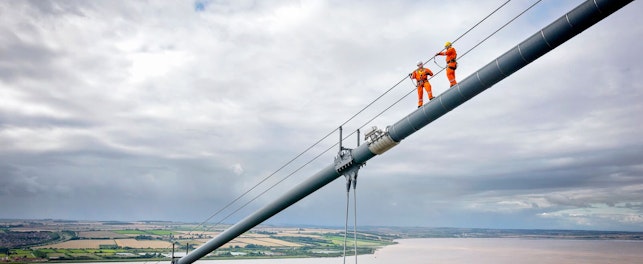Air pollution from transport, power generation, industrial and domestic source, can change the composition of the ambient air. This may result in increased incidences of cancer, respiratory and cardiac disease.
SGS Ambient Air Monitoring
Using state-of-the-art technology, we can measure the concentration of pollutants in surrounding outdoor air. Experienced field services teams collect, store, handle and analyze samples to internationally recognized and locally accepted standards.
Comprehensive ambient air services include:
- Passive monitoring
- Using diffusive and/or passive sampling methods to gain an indication of average pollution concentrations over set periods. Ideal for baseline measurements and temporary sites
- Measured pollutants include SO2, NO2, NOx, CO, O3, HF, H2S, BTEX and VOCs
- Deposition monitoring
- Determines particulate and other pollutant deposition rates along the fenceline of a facility. Results can provide average pollutant concentration level over one-month period
- Samples can be analyzed for traditional parameters, in particular heavy metals, dioxins, furans etc.
- Total suspended particulate (TSP) matter and fine particulate matter (PM-10 and PM-2.5)
- TSP – airborne particles or aerosols that are less than 100 micrometers in size and usually sampled by means of a high-volume sampler
- PM-10 and PM-2.5 – fine inhalable fractions of suspended dust particles that are regulated due to potential impact on health
- Active sampling by sorbent tube
- Ambient air is drawn through sampling tube at a pre-determined flow rate over a specified duration by means of a calibrated sampling pump
- High volume sampling
- Determines the concentration of pesticides/PCBs using Polyurethane Foam (PUF) and Dioxins/PAHs using PUF/XAD cartridge with quartz fiber filter. Samples are analyzed by accredited SGS laboratories in Belgium, USA, China, Germany and Taiwan
- Canisters
- Sample drawn into the canister by vacuum. Collecting either by grab or integrated sampling:
- Grab sampling – normally performed over a short interval (1-5 minutes), often used as response to an emergency. Provides a “snapshot” of air quality at the moment of sample collection
- Integrated sampling – longer periods of sampling (5 min – hours). Flow controller regulates the rate at which the sample enters the canister. Used when air quality fluctuates over time or time-weighted concentrations are required
- Evacuated canister integrated sampling can be conducted for periods up to a week
- Continuous monitoring
- SGS operates and manages dedicated mobile and fixed monitoring stations capable of measuring pollutant concentrations in real-time
- Typical parameters include PM10, PM2.5, O3, SO2, NOx, CO, THC
- Samples pass through a Teflon or glass inlet manifold to the analyzer. Data is logged at user defined intervals and relayed to a dedicated SGS or client server
- Data validated during daily, weekly or monthly QC and calibration checks
Why choose SGS?
With over 6,000 environmental specialists operating in over 100 countries, SGS can help you design and implement your ambient air monitoring program. With an unrivaled network of accredited laboratories around the globe, we can quickly analyze your samples, providing quality scientific data to enable informed decision making.
To find out more about ambient air services, contact your local SGS office.
38, Calea Serban Voda,
sector 4, 040212,
Bucharest, Romania











